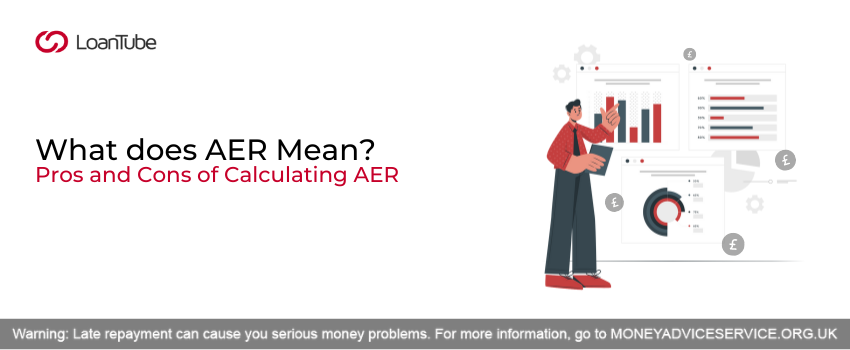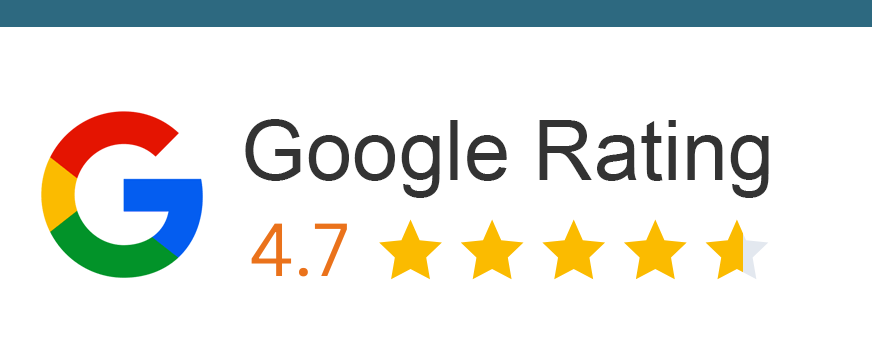A lot of us get perplexed when it comes to financial terms. In fact, not knowing these terms often gets us in trouble when engaging in financial contracts, such as getting a loan or investing, etc. These terms are not only crucial for banks and financial institutes, but they are also essential for us to know and understand.
One such term is AER – an annual equivalent rate. Let’s dive in to understand what AER means, how it’s calculated, where it is applicable, and so on.
Representative Example: £12,000 over 66 months, 31.9% APR fixed. Monthly payment £358.22 Annual interest rate 28.01% fixed. Interest payable £11,642.52. Total repayable £23,642.52. Representative Example: £12,000 over 66 months, 31.9% APR fixed. Monthly payment £358.22 Annual interest rate 28.01% fixed. Interest payable £11,642.52. Total repayable £23,642.52. Representative Example: Loan Amount: £20950.00, Loan Term: 85 Months, Interest Rate: 23.00% PA Variable. Monthly Repayments: £537.44. Total Amount Repayable: £45,682.15. This example includes a Product Fee of £2,095.00 (10% of the loan amount) and a Lending Fee of £714.00 Representative Example: Loan Amount: £20950.00, Loan Term: 85 Months, Interest Rate: 23.00% PA Variable. Monthly Repayments: £537.44. Total Amount Repayable: £45,682.15. This example includes a Product Fee of £2,095.00 (10% of the loan amount) and a Lending Fee of £714.00 Representative Example: Borrowing £3000 over 36 months with a representative APR of 39.9% (variable),the amount payable would be £134.21 a month,with a total cost of credit of £1831.56 and a total amount payable of £4831.56. Representative Example: Borrowing £3000 over 36 months with a representative APR of 39.9% (variable),the amount payable would be £134.21 a month,with a total cost of credit of £1831.56 and a total amount payable of £4831.56.Maximise your options: Compare and apply for loans below with LoanTube
Apply Filters

Loan Amount
£4000 -
£20000
Norwich Trust
Loan Term
1 -
10 years
4.8/5
Representative APR
31.90%
Minimum Age
21 Years

4.8/5
Norwich Trust
Loan Amount
£4000 -
£20000
Loan Term
1 -
10 years
Representative APR
31.90%
Minimum Age
21 Years
Minimum Income
£2000 per month

Loan Amount
£5000 -
£100000
Evolution Money Loans
Loan Term
1 -
20 years
4.5/5
Representative APR
28.96%
Minimum Age
18 years

4.5/5
Evolution Money Loans
Loan Amount
£5000 -
£100000
Loan Term
1 -
20 years
Representative APR
28.96%
Minimum Age
18 years
Minimum Income
Not mentioned

Loan Amount
£1000 -
£10000
1Plus1 Guarantor Loans
Loan Term
1 -
5 years
4.4/5
Representative APR
39.90%
Minimum Age
18 years

4.4/5
1Plus1 Guarantor Loans
Loan Amount
£1000 -
£10000
Loan Term
1 -
5 years
Representative APR
39.90%
Minimum Age
18 years
Minimum Income
Not mentioned
The Definition of AER
- AER stands for Annual Equivalent Rate. By definition, it means the total borrowing cost. AER reflects the total yearly amount you will pay or earn – on the money you take or save – after adding all the interest rates and additional charges.
What is AER?
- In simple terms, AER shows you how much you will pay or earn on your borrowing or savings over the span of one year. It is expressed in a percentage format. For example, if you have £1000 in savings and an AER of 0.50%, you earn £50 in interest at the year’s end. An AER can also be calculated on investments and for lines of credit and loans.
- An AER is different from an APR (annual percentage rate) because an APR only tells you about the total amount after calculating the interest rates. At the same time, an AER calculates all the additional costs along with the interest rate. While AER is used for savings accounts and investments, APR is the standard measure for loans and credit in the UK, which includes both interest rates and additional charges. APR, not AER, is the standard measure for loans and credit in the UK. When comparing loans, use the APR to understand the total cost of borrowing, including both the interest rate and additional fees.
Examples of AER
- Let’s take an example of calculating the AER on a loan. If you need to make 12 monthly payments with an APR of 12%, compounding monthly, you will be charged 12% in the first statement. But in the second statement, you will be charged by compounding the interest on interest. This makes your AER 12.68%. You have to calculate the AER and apply it to the original balance to determine how much you have to pay on loan.
- When you calculate the AER of anything, you can get an accurate figure of how much you will pay or earn. This can help you compare loans and investment options from several financial institutions.
How is AER Calculated?
To calculate the AER of any amount, use the following formula:
AER = (1+r/n) ^n-1
Here, r stands for the rate of interest per annum, and n is the number of compounding periods per year. The formula calculates the interest rates and additional costs, even on your credit cards and other loans.
- Divide the interest rate by the number of times it is going to get compounded in a year
- Then raise the result with the number of times the interest will be paid
- Finally, subtract one from your result
Your result will be shown in percentage. Calculating the AER can be intimidating with the complicated formula if you are doing it for the first time. However, don’t let it scare you. As long as you make yourself completely familiar with the components, you should be good to go.
If you cannot figure out how to calculate, several financial calculators are available online to help you.
How Does the Annual Equivalent Rate (AER) Work?
The AER is an accurate way of understanding how much earning you get by the end of the year or what total amount you have to repay. This helps in determining which loan or savings options will suit your needs. Let’s see how the AER is used to compare investments and loans:
-
Using AER to Compare Loans or Credits
Calculating the AER of loans or credit cards is good to widen your knowledge of how much debt you will repay by the end of a year. It is also a good tool for comparing loans to see which one will end up costing you more.
For example, if you have to select from two loans with the same interest rate but one compounds more often, you will see that after calculating the AER, the loan that compounds more end up costing you more. Similarly, when comparing two different credit cards with the same interest rates, the card that compounds more from the two will cost you more debt. You will realise this only when you find the AER of the two.
This is why comparing different loans is important! LoanTube can help you compare multiple online loans with a guaranteed annual percentage rate. Whatever rate you see is what you will end up paying!
-
Using AER to Compare Investments
Let’s take an example of two imaginary certificates of deposit. The first has an interest rate of 7%, compounded semi-annually, and the second has an interest rate of 6.95%, compounded daily. Assume they both have a tenure of 10 years. On the surface, you will think that the one with a higher interest rate is more beneficial. But if you calculate their AER, you will realise that option two will earn you more interest since it is compounding daily.
What are the Advantages and Disadvantages of AER?
- There are several pros and cons of calculating the AER of a loan or an investment. One of the main benefits of knowing the accurate AER of an investment product is that you get to understand the real interest rate. You get to compare all the investment options in the market accurately. Even the return on investment can be calculated with the help of AER.
- However, with advantages, there are also disadvantages investors usually face. The first one is too confusing to use. Since it is not widely used as much as APR, it might get challenging to calculate the AER of an investment product. Moreover, investors usually have to calculate the AER manually.
| Pros of AER Interest | Cons of AER Interest |
| The most accurate comparison between investment products | Investors have to calculate it on their own |
| It also includes additional charges along with interest rate | It is not widely used for calculating interest rates as much as other methods |
| A simple method for calculating ROI |
Why Do You Need to Calculate the AER?
- Many financial institutions will likely advertise whatever rate attracts the customer. For a credit card or loan, they will show you the nominal rate, as it will always be lower than the AER. Since they won’t tell you how much compounding will happen in the back end, you will think the interest rate is everything you will have to pay.
- For example, if a credit card has a 15% interest rate, the financial institution will advertise that. When the AER is calculated, daily compounding will cost you 16.18%. Similarly, for a savings account, the financial institutions promote the AER to establish themselves higher in the market with the highest interest rates.
- Hence, calculating the AER is extremely important so you know exactly what you are paying or getting!


